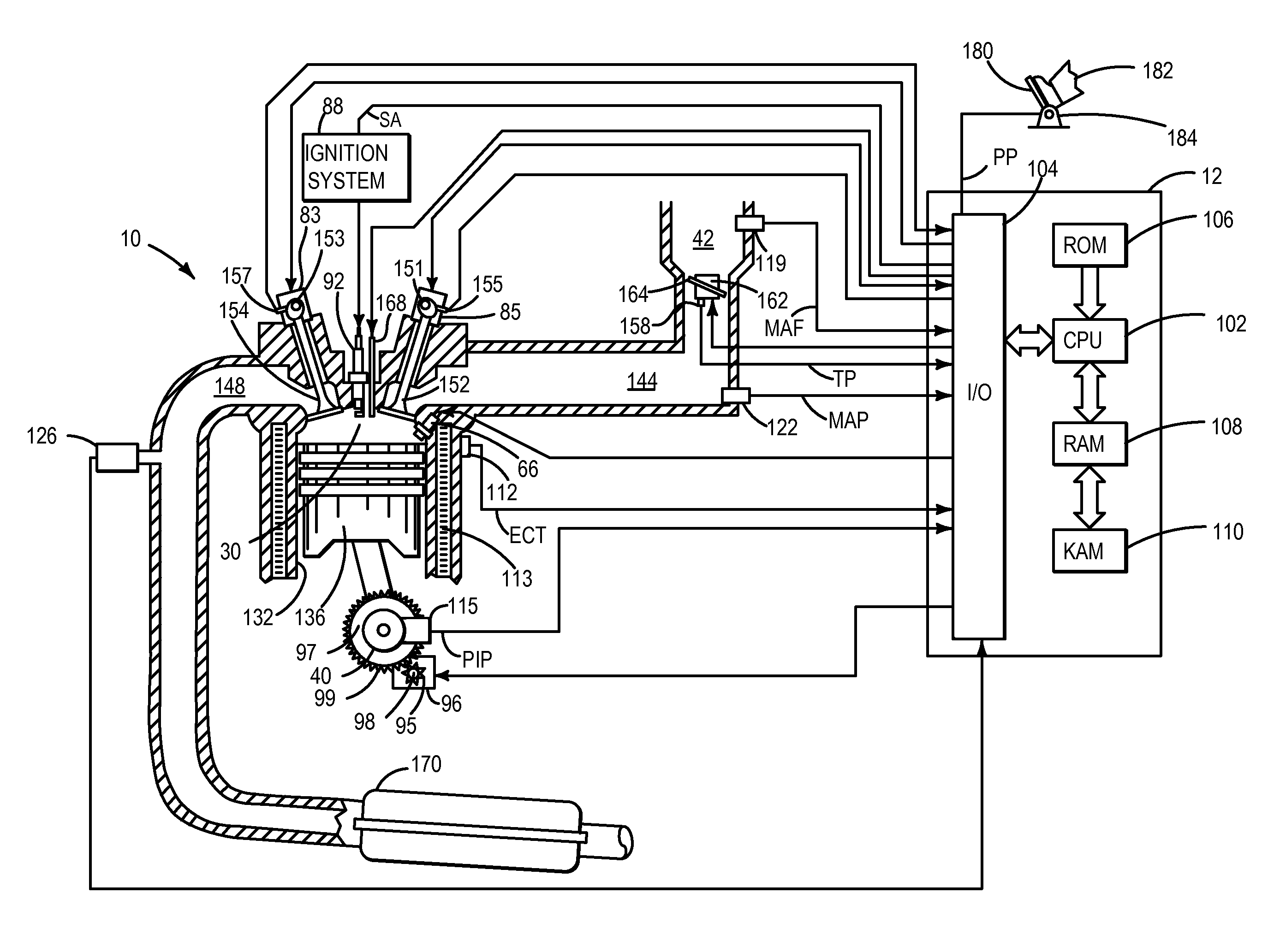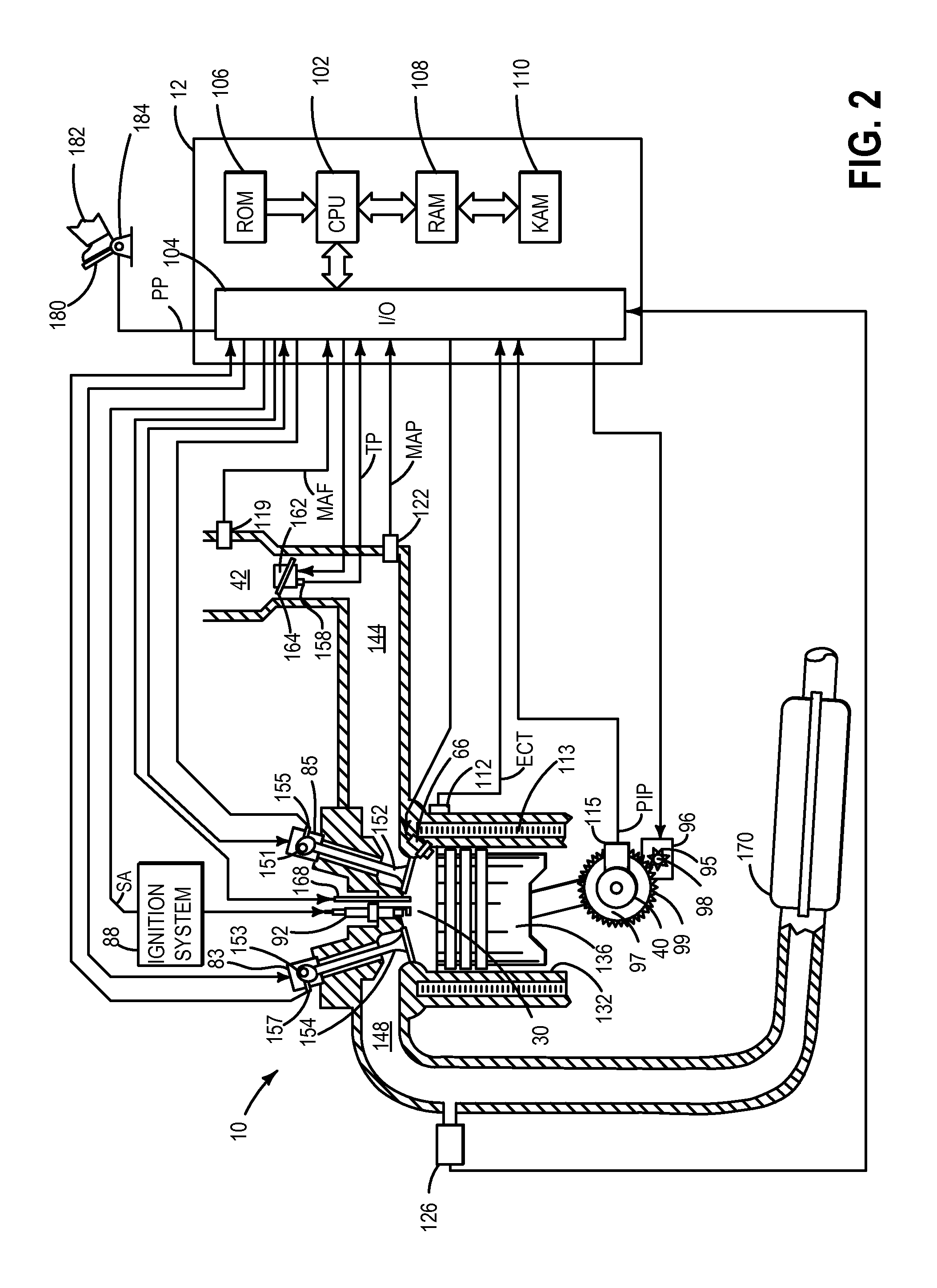Systems and methods for transient control
a transient control and system technology, applied in the direction of electric control, machines/engines, output power, etc., can solve the problems of reducing the peak torque capability of the engine, reducing the efficiency of the catalyst, and the use of the diverter valve may be cost prohibitive, so as to reduce the knock of the engine, reduce the loss of throttling, and reduce the nox emissions of the in-cylinder heat loss, the effect of fuel economy improvemen
- Summary
- Abstract
- Description
- Claims
- Application Information
AI Technical Summary
Benefits of technology
Problems solved by technology
Method used
Image
Examples
Embodiment Construction
[0016]The present description is related to EGR flow control on an engine operating with highly diluted cylinder mixtures, such as the engine systems of FIGS. 1-2. The engine cylinder mixtures may be diluted using recirculated exhaust gases (EGR) that are byproducts of combusting air-fuel mixtures. In response to an increase or decrease in EGR demand, such as responsive to a change in engine load, exhaust from the dedicated EGR cylinder group may be diverted to or away from the engine intake. A controller may be configured to perform a control routine, such as the routine of FIGS. 3-4, during a transition between dedicated EGR cylinder operating modes, to reduce torque transients and enable a smooth transition. Therein, the controller may coordinate the adjustment of multiple engine actuators, such as an intake throttle, an exhaust wastegate, spark timing, cam timing and valve timing, during the transition as EGR flow from the dedicated EGR cylinder group varies, to reduce torque tr...
PUM
 Login to View More
Login to View More Abstract
Description
Claims
Application Information
 Login to View More
Login to View More - R&D
- Intellectual Property
- Life Sciences
- Materials
- Tech Scout
- Unparalleled Data Quality
- Higher Quality Content
- 60% Fewer Hallucinations
Browse by: Latest US Patents, China's latest patents, Technical Efficacy Thesaurus, Application Domain, Technology Topic, Popular Technical Reports.
© 2025 PatSnap. All rights reserved.Legal|Privacy policy|Modern Slavery Act Transparency Statement|Sitemap|About US| Contact US: help@patsnap.com



